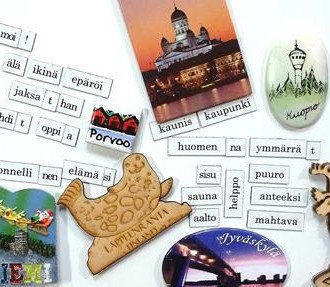Learning Finnish is far from impossible, and the number of non-Finns who can speak the language is constantly growing. For this article, we ask friends and colleagues what textbooks they’re using, and request tips on mastering Finnish.
Recent years have seen numerous new Finnish-as-a-second-language textbooks hit the market – so many that one article cannot claim to encompass them all. A trip to a Helsinki bookstore reveals textbooks written for speakers of English, French, German, Italian, Russian and Swedish, as well as books that use Finnish only, independent of the student’s mother tongue (often accompanied by a separate, bilingual wordlist).
The people we talk to here offer some unexpected textbook suggestions and loads of encouragement, as well as home-tested tips and strategies for Finnish learners of all levels. In fact, we received so many recommendations that we had to divide the article into two parts.
The ultimate classic, and a new view
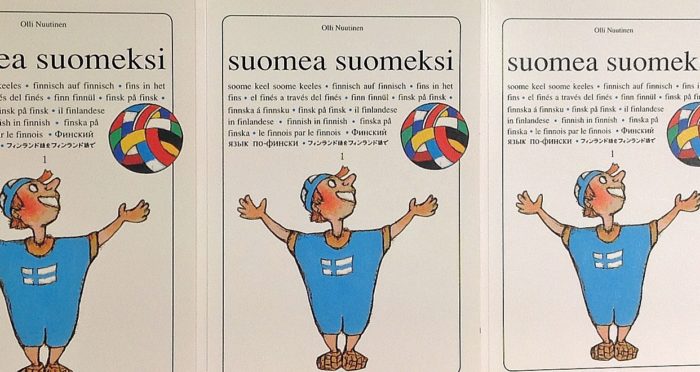
“Suomea suomeksi,” now in its 20th printing, is still going strong.Photo: ThisisFINLAND
ThisisFINLAND staff: Suomea suomeksi (Finnish in Finnish) by Olli Nuutinen (SKS) forms a decades-old, tried-and-true classic, now in its 20th printing and still going strong. Its easy-to-follow, systematic approach hasn’t gone out of fashion. A recent arrival is Eila ja Ossi (Eila and Ossi) by Mika Lamminpää (Gummerus), a textbook and accompanying CD made with immigrants in mind. Both books are clear, down-to-earth, practical and written solely in Finnish. (Eila ja Ossi does include three pages of Finnish-English vocabulary with space to fill in a third language if you like.)
Go for it, and don’t give up!

Get into the Finnish language – and the Finnish sense of humour: If you can read this sign, “You’re either halfway up or halfway down.”Photo: flickr/ZeroOne, cc by sa 2.0
Celia from France: The first book I used was Le finnois (Finnish) by Tuula Laakkonen (Assimil). This book let me study Finnish while living in France. The lessons were very well done, with cultural info and humour, which made it easier to learn. I acquired a satisfactory level and would recommend this book for French speakers.
Suomen mestari (Finnish champion), volume one, was the second book I used, in a course at the Summer University of Turku. After studying Finnish on my own, I enjoyed going to class and deepening my skills. This book was very well structured, enriched my vocabulary and strengthened my grammar.
Celia’s tips: You need lots of motivation in order to acquire a decent level, plus when learning any foreign language you’ll always face phases of ups and downs. I considered dropping it completely several times, but since I really wanted to come to Finland, my motivation level was very high and I continued. Now I can speak almost fluently, and I can’t even explain how great it feels to watch movies without subtitles, to speak Finnish when I go to the bank and to talk about everything with my friends. So go for it, and don’t give up!
Start learning right away
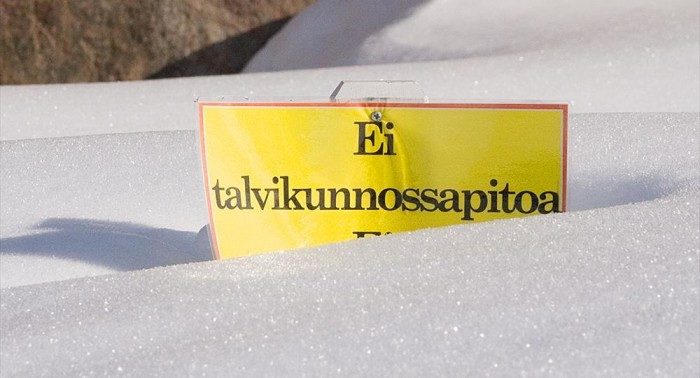
This path is not maintained during the winter – but maybe you knew that even if you couldn’t read the sign.Photo: flickr/Tomi Tapio, cc by 2.0
Stanislaw from Poland: When I arrived in Finland 24 years ago I used Finnish for Foreigners by Maija-Hellikki Aaltio (Otava) in a course at Tampere University. For me this book was very good. The grammar and logic were clear to me. I learned a lot of words, which was important in the beginning.
Stanislaw’s tips: A good method is to watch Finnish TV and read the subtitles. I used to do this and consciously try to remember some key words to use later on. Having conversations with Finns is also good – ask them to correct your sentences. It’s important to start learning right away.
Finnish is child’s play
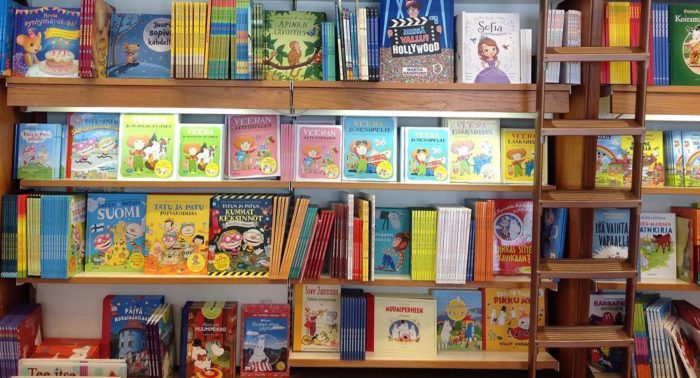
Kids’ books are fun and colourful, and you can learn a surprising amount of Finnish from them.Photo: ThisisFINLAND
Daria from Russia: The books that are the most useful for me are mainly children’s books, for three reasons:
1. The illustrations and the common words make it easy to choose one you’ll like. 2. I have a little boy. It’s more interesting to read with such nice company. We learn together. 3. The language is usually easy to understand, and the books are not too long.
My favourite one is Kummamumma (Funny granny) by Oili Tanninen (Otava). I bought it at a flea market because I loved the illustrations. Then I found that the text is very useful in everyday life. My other favourite is Leonardon suuri unelma (Leonardo’s Dream) by Hans de Beer (Lasten keskus). The text consists of simple, useful words. The dialogues are simple but emotional, which helps teach you different ways to say things. The penguin in the book doesn’t just talk about the weather – he says stuff like “Eipä taida olla tänään lentosää” (It doesn’t seem to be flying weather today), so you learn something new.
Champion of the Finnish language
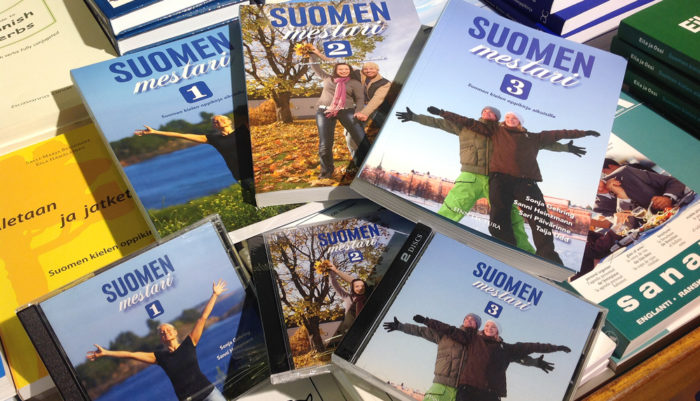
The title “Suomen mestari” suggests that you’re on your way to becoming a master, or champion, of the Finnish language.Photo: thisisFINLAND
Florian from Germany: The Suomen mestari (Finnish champion) series forms an all-Finnish study book for people who are learning Finnish from scratch, and for people who know some Finnish and want to improve. Chapters revolve around certain topics, and grammar concepts are fortified by numerous writing, speaking and listening tasks. There’s a separate audio CD.
The lessons and related exercises feature a lot of illustrations, which is really helpful. I’d recommend this book if you have accompanying lessons with a teacher.
Florian’s tips: Finnish grammar is manageable – it’s quite methodical, with few exceptions – but the vocabulary can be a mouthful, so learning words is crucial. Getting comfortable with spoken Finnish is a challenge in its own right.
Compiled by Peter Marten, Sabrina Salzano and Sara Vihavainen, April 2014
